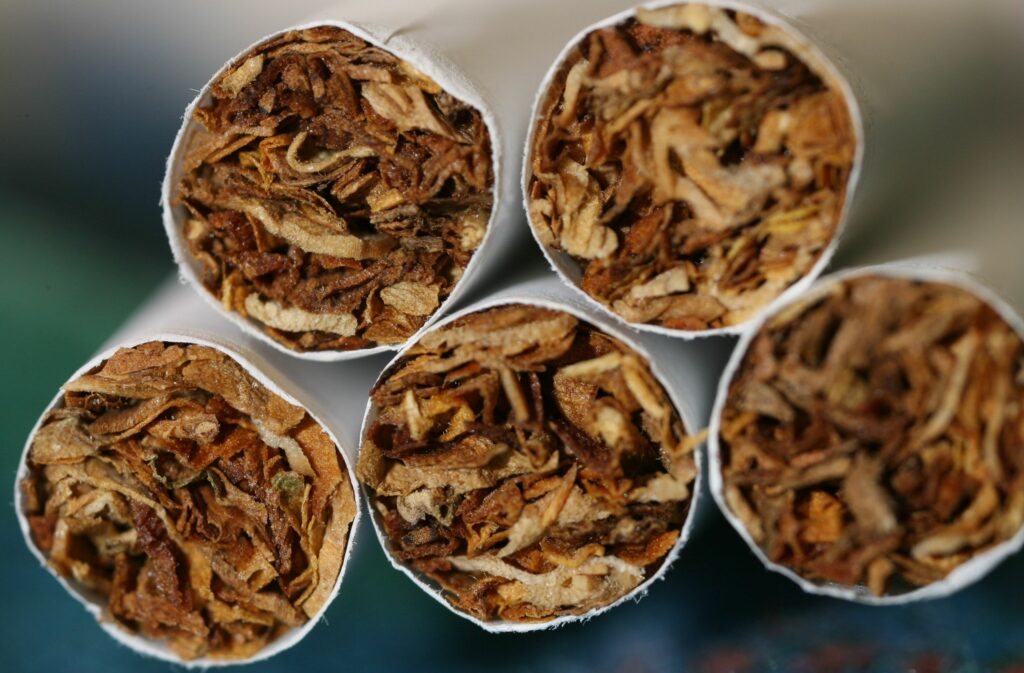You can also listen to this podcast on iono.fm here.
JIMMY MOYAHA: We kick off our results conversations with the team at Sasol. They gave us an update on the full financial year-that-was for the business [and] the business [is] seemingly on a much better footing. Free cash flow is up, impairments down. Even though turnovers are a little softer than expected, the business is still doing exceptionally well.
Read: Sasol swings to profit as shares surge 39% in 2025
I’m joined on the line by the chief financial officer at Sasol, Walter Bruns, to take a look at this and see what we make of it. Walt, lovely to have you back on the show…
The last time you and I caught up was towards the end of May. We were discussing Sasol’s Capital Markets Day and…what we could expect from the business performance-wise.
And then a little while ago there was a trading update that was provided to the market to say, hey, we’ve actually got a lot to report. Today was that day of reporting. Take me through the year that was.
WALT BRUNS: Thanks, Jimmy… We talk about building credibility through performance, and I think that’s what we guided when we sat at the Capital Markets Day and I told you what the plan was. It was important for us to come out soon after that to show that we have some proof points on the journey to just restoring Sasol to its former glory.
I think there’s still a long way to go, so we remain humble, but certainly days like today are positive. The share price is up quite a bit. If I reflect on the year, the most important metric for me is the free cash flow number, as you mentioned – up 75% to R12.6 billion. That’s helped us to deleverage the balance sheet.
So our net debt number came in at $3.7 billion (R65.2 billion), which was below the $4 billion that we previously guided. And we seem on track to get to our net debt target of just below $3 billion that we guided at Capital Markets Day.
So it was achieved against a challenging macroeconomic environment. The oil price was obviously lower than it was last year. The exchange rate strengthened. But it was important for me and the rest of the team here at Sasol to show that we can take more back into our control than maybe we previously thought. We kept the costs nicely below inflation. Capital came in below, and our working capital was largely to target.
So [we’ve been] just keeping to the basics and focusing on producing products that people still want.
JIMMY MOYAHA: That free cash flow number really is something else. In case you missed it, Walt did not miss the number. It is, in fact R12.6 billion – including, of course, the R4.3 billion that Transnet owes to Sasol that was accounted for in that financial year.
Read: Sasol shares jump on news of R4.3bn Transnet settlement
Walt, what didn’t help the business was the rand oil price coming through and definitely hitting the turnover figure – that figure coming down quite a bit. But those are factors beyond your control, I suppose. The best you can do is try to hedge out some of your exposure there. But, given that Sasol has international operations even beyond the oil side of it, as we look at the chemicals business – and we’ll do that in a moment – some of these things are really out of your control.
WALT BRUNS: Yes, absolutely. If you look at our turnover line, even though it was 9% down, it was still R249 billion. That’s a huge number. So, as I mentioned, we still produce products that people want and need. And so, if the sales price is down because of the rand oil [price] we need to make sure that we contain our costs and that we can translate some of that turnover into free cash flow. We did a better job this year than maybe in the previous years with regard to that and, as the CFO, I’m happy to sit here and report that.
In terms of how we hedge this, we do hedge out both the oil and the exchange rate, so we’ve even hedged out for this next financial year. We’ve got a floor price of about $60 per barrel on 60% of our volumes. So that does give us some downside protection if the oil price does drop more than where it currently stands. Obviously it’s difficult to predict and I certainly don’t want to be as bold as to say what I think the number is going to be. But certainly how we manage within the range of possible outcomes is important.
JIMMY MOYAHA: Walt, your line seems to be giving up on us as we’re getting to the good parts of the conversation, but perhaps you can take me through just two final things.
We see lower impairments this time around from a business perspective; this was guided for in the trading statement leading up to the results being released, so we were expecting this – and I suppose the market was very happy with that. But take me through that and how you’re feeling about the future of the business. I know there’s a sense of optimism within the Sasol Group, and I know that we have to look at the chemicals business and see what’s happening there and deal with that. But how are you feeling overall with where the business is at the moment and the turnaround strategy?
WALT BRUNS: Thanks, Jimmy. As I mentioned, these are the first proof points in our journey. At Capital Markets Day we showed the plan to 2028. So for the next three years I think we need to, as I mentioned earlier, stay humble and make sure that this is the first chapter in this journey.
I feel a lot better knowing that our costs are under control. I think it’s important now to grow that volume line. We’ve guided for an uplift on Secunda volumes to 7-7.2 million tonnes. We still believe there’s more to come from that.
But at least in terms of the Destoning Project, which we spoke about before, we commissioned that plant recently and it’s busy ramping up. That will certainly help to improve the coal quality that we feed to the Secunda production.
And then, as you mentioned on our international chemicals business, it’s a fantastic asset that we have in Lake Charles in the US. It hasn’t delivered to potential, but that business delivered more than a 40% uplift in US dollar earnings and we achieved $411 million Ebitda [earnings before interest, taxes, depreciation, and amortisation], which is, as I mentioned, a 40% increase. That certainly helps to diversify our earnings across the different geographies.
I heard you talking earlier to your analyst on the impact of tariffs. Having global operations in different parts of the world certainly helps to protect us from that. While there are obviously threats as a result of it, it also comes with opportunities.
JIMMY MOYAHA: Walt, do those opportunities include a dividend?
WALT BRUNS: Not at this stage, Jimmy. Our dividend trigger is the $3 billion mark. As you mentioned earlier, right now I can offer to shareholders [that] it’s less about the dividend as opposed to the capital appreciation.
We feel that the best use of our capital is to pay down the debt and just de-risk the enterprise.
By doing that we believe we will increase the enterprise value and by paying down the debt increase the share of equity in that enterprise value.
So for those shareholders who bought in at R53/share, like you mentioned, obviously they’re smiling, but we’re not blind to the fact that there are a number of shareholders who bought in at much higher prices and we want to prove that we can get the share price back – maybe not always to historic levels, but certainly continue this trajectory that we are on.
JIMMY MOYAHA: Well, R400, R600, R800 – at some point these are share prices that we have seen. On the Sasol share price, I think, if I’m not mistaken, the highest that we got was around the R650 mark – sorry, not R800. But we are a long way away from that, and this is why the business is taking the cautious approach to manage things responsibly.
We’ll leave the conversation on that note. Thank you so much, Walt, for those insights. Always lovely having you on the show. Walt Bruns, Chief Financial Officer of Sasol, joined us to take a look at their numbers.

 2 hours ago
1
2 hours ago
1






















 English (US) ·
English (US) ·